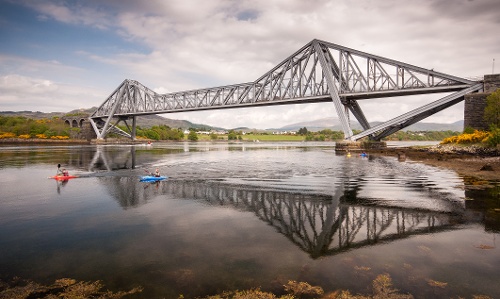
In March 2021, we hosted a past MIDAS Expert Webinar, "Case Study: Analysis for Assessment of Iconic Steel Structure Connel Bridge, Scotland" by Javier Lancho, a senior principal bridge engineer from Jacobs UK. In this session, we will learn about the existing bridge's assessment process as per the previous British Standard and check the identical model in midas Civil.
Key Points
1. Why are bridge assessments necessary?
Bridge assessment refers to evaluating the various functions of the existing bridge to judge the bridge's practicality and safety. Purposes of the bridge assessment are analyzing a structural defect, evaluating the safety and practicality of old bridges, maximizing economic use by extending the life of the existing bridge, and providing necessary data for the maintenance of existing bridges.
2. Assessment process
We want to learn about the precise assessment process carried in the UK. The speaker will introduce all the assessment process steps for existing bridges and explain the valuable functions of midas Civil applied to this project.
3. Modeling Considerations
During the modeling process in midas Civil, the speaker will show a typical steel bridge's step-by-step modeling process using various modeling functions in midas Civil.
Project Application
1. General Information
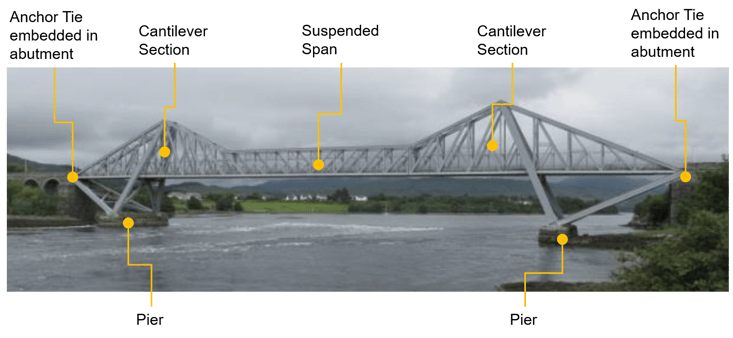 Figure 1. Connel Bridge Components
Figure 1. Connel Bridge ComponentsThe scheme focuses on the A828 10 Connel Bridge in Scotland, UK. It was originally named Connel Ferry Bridge, located between Connel and North Connel, 5 miles northeast of Oban, Argyll. It was constructed in 1903 to carry the railway line to Fort William over Loch Etive.
The project owner was Transport Scotland; the designer was John Wolfe Barry, and the General Contractor was Arrol's Bridge and Roof Company.
The A828 Connel bridge, a typical cantilever bridge, is a 224 meters long riveted steel structure comprising two 77-meter cantilever sections supporting a 70m suspended span. The cantilever sections are supported on piers, and anchor ties are embedded at each end of the bridge's abutments.
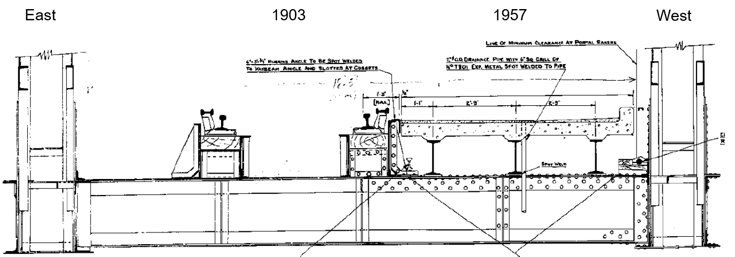 Figure 2. Old Bridge Configuration
Figure 2. Old Bridge ConfigurationIt currently carries the road A828 over Loch Etive since a composite steel and concrete deck was installed in two phases in 1957 and 1967.
The center rail track was installed in 1903 for real traffic, and prefabricated deck units were installed on the west side in 1957. Therefore, from 1957 to 1967, the bridge was shared by road and real traffic.
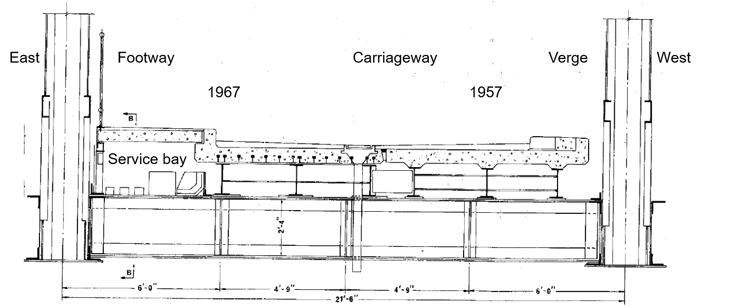 Figure 3. Current Bridge Configuration
Figure 3. Current Bridge ConfigurationFigure 3 shows the current bridge configuration. In 1967, the composite deck units were installed at the bridge's east side with a new footway and a service bay for utility services.
2. Commission
The client commissioned Jacobs to assess the structural capacity of the bridge to satisfy British Standards. In order to accomplish that, record information was made available by the client, and the client also carried out an inspection for assessment.
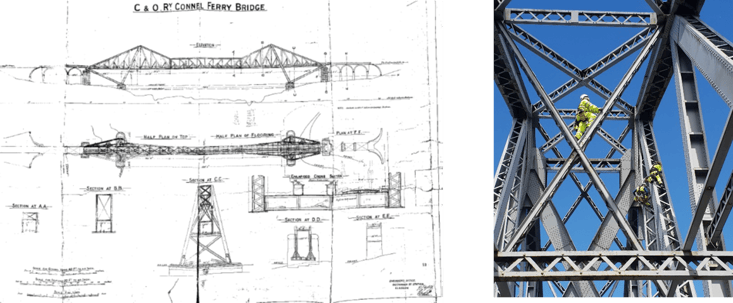 Figure 4. Connel Bridge Record Drawing
Figure 4. Connel Bridge Record Drawing
3. Complexity
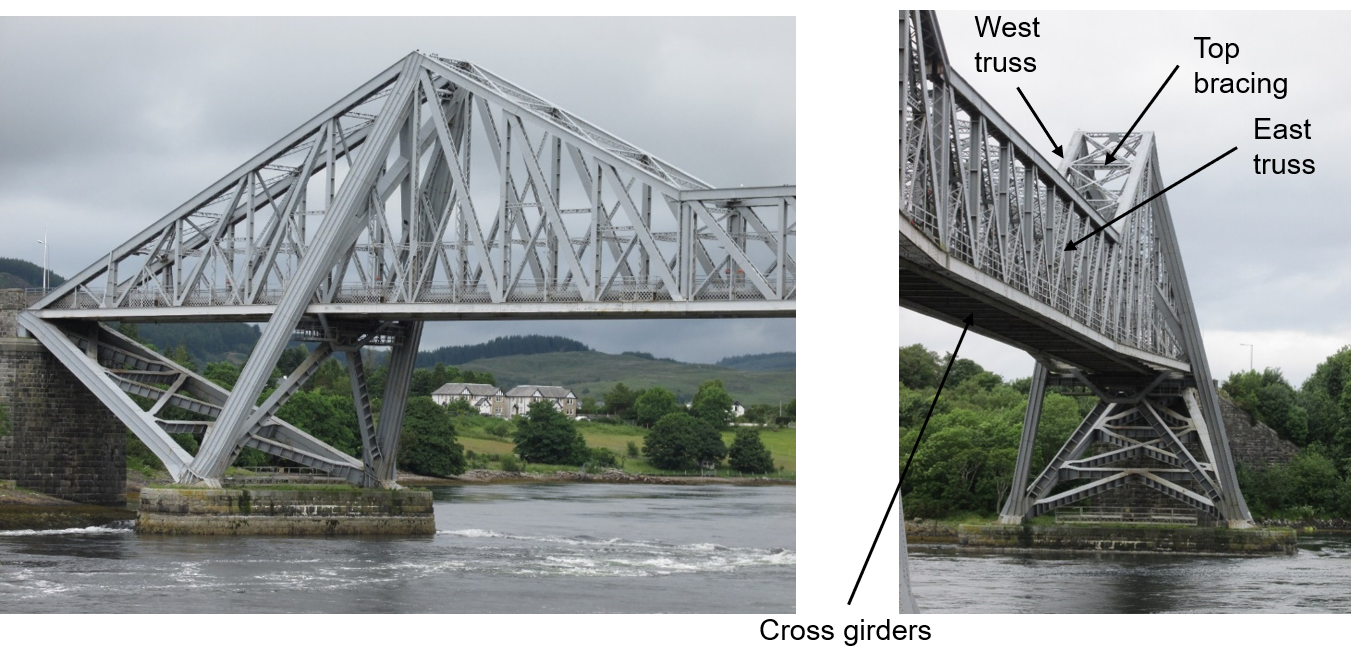
Figure 5. Connel Bridge Complexity
Regarding the bridge's complexity in terms of structural analysis, the Connel bridge is quite complex in modeling. The original steel structure comprises two trusses, top bracing, cross girders at the bottom, and bracing in the vertical plane. Therefore, a large number of structural members should be modeled, as shown in Figure 5.
.png?width=1370&name=Connel%20Bridge%20Complexity%20(outside).png) Figure 6. Connel Bridge Complexity (Outer)
Figure 6. Connel Bridge Complexity (Outer)
Outside the trusses, as shown in Figure 6 (right), there are horizontal members and diagonal bracing.
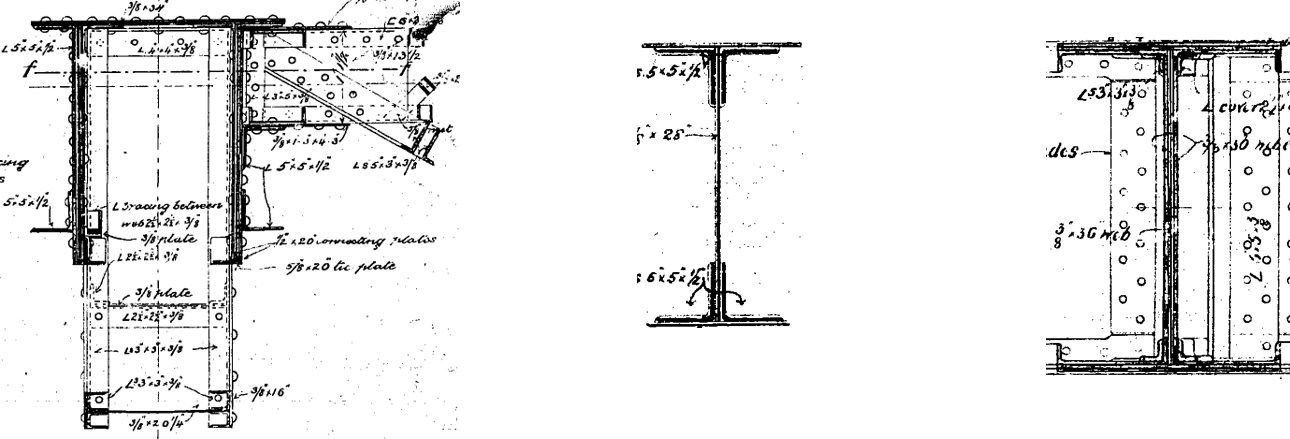
Figure 7. Bridge Cross-Sections
The cross-sections are not simple either since there are no regular sections found in midas Civil library since they are not predefined cross-sections. Figure 7 shows three examples of cross-sections. The center one seems to be the simplest; however, it also contains steel angles to connect the web to the flanges.
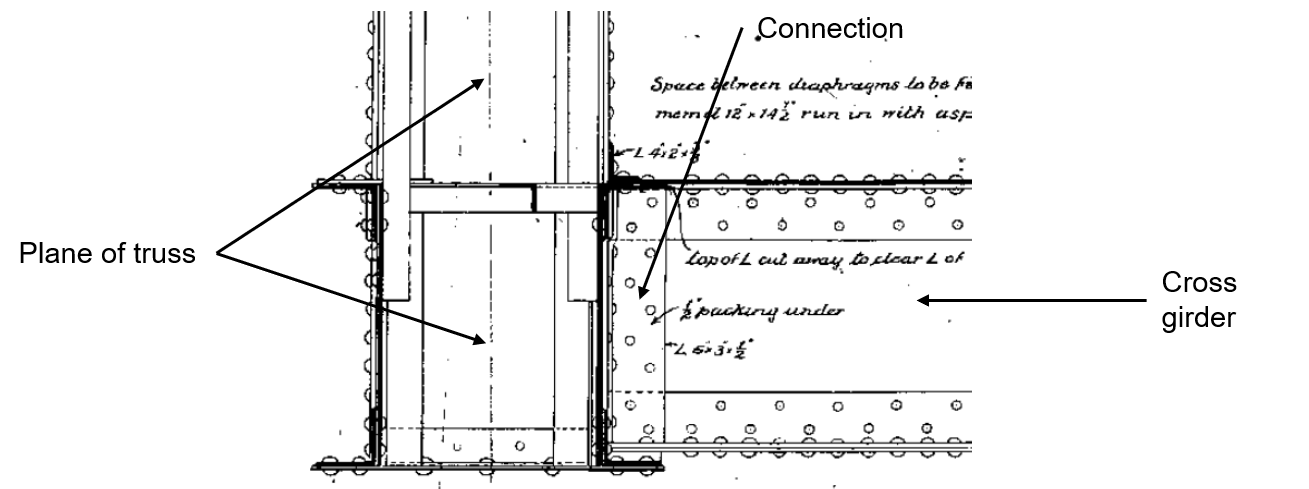 Figure 8. Plane of Truss
Figure 8. Plane of Truss
The main traffic loads are out of the plane of the trusses. The cross girders resist traffic loads, and the connections between the trusses and the loaded cross girders are located out of the plane of the trusses. Therefore, there is an eccentricity at the connection part to be modeled.
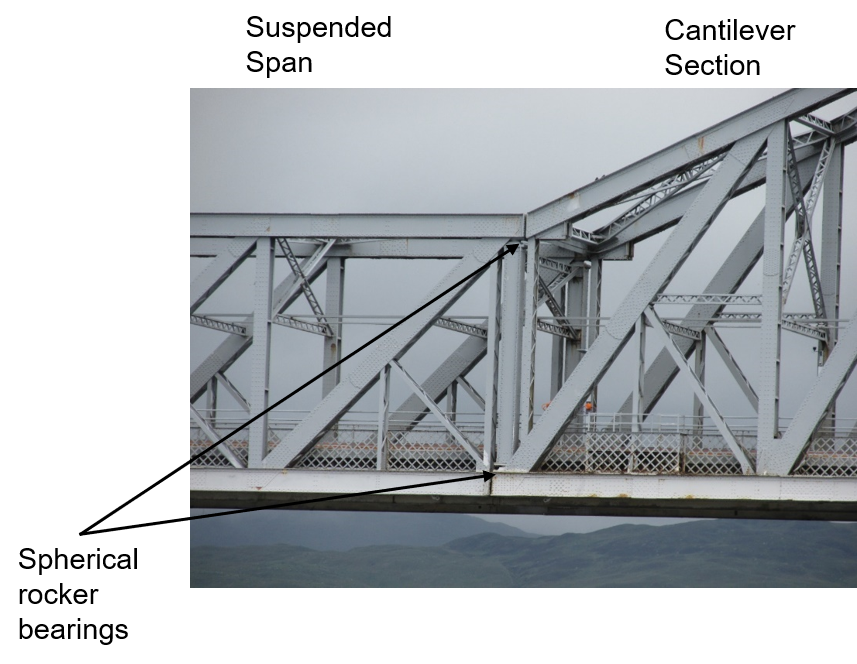 Figure 9. Connel Bridge Connections
Figure 9. Connel Bridge Connections
The connections between the suspended span and the cantilever sections contain 8 spherical rocker bearings. Two spherical rocker bearings are shown in Figure 9.
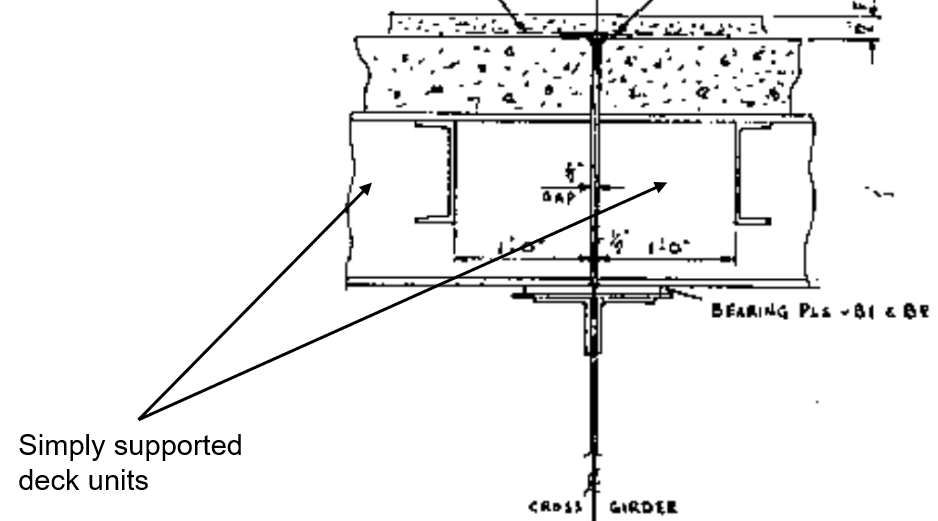 Figure 10. Deck Articulation Arrangement
Figure 10. Deck Articulation Arrangement
The deck is composed of prefabricated composite steel and concrete deck units simply supported on the cross girder. Therefore, the simply supported condition of the bridge is to be modeled.
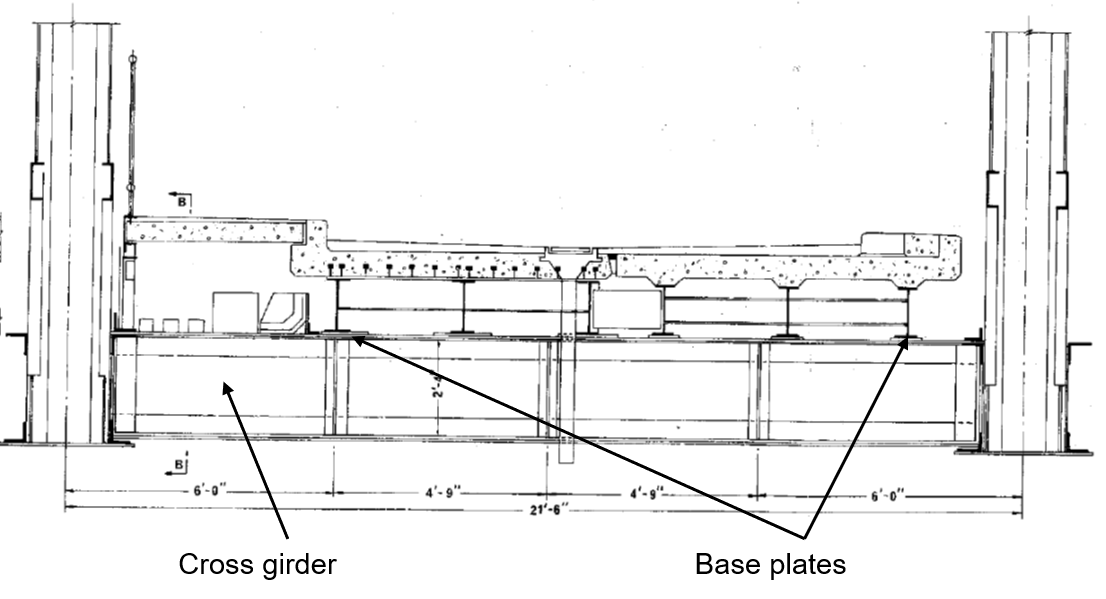 Figure 11. Cross Girder & Base Plates
Figure 11. Cross Girder & Base Plates
The cross-section of the bridge and the deck's longitudinal girders are welded to the base steel plates. Some of these base plates are welded and fixed to the original; however, some base plates rest on the cross girders with no further connection. They are free to move over the cross girders, provided that the friction force is exceeded. Therefore, the 'Rattle fit' of the deck is another thing to be modeled.
Assessment Process
1. Knowledge of Available Record Information
The knowledge of available record information aims to know what information is available and what information is required.
2. Inspection for Assessment

3. Modeling
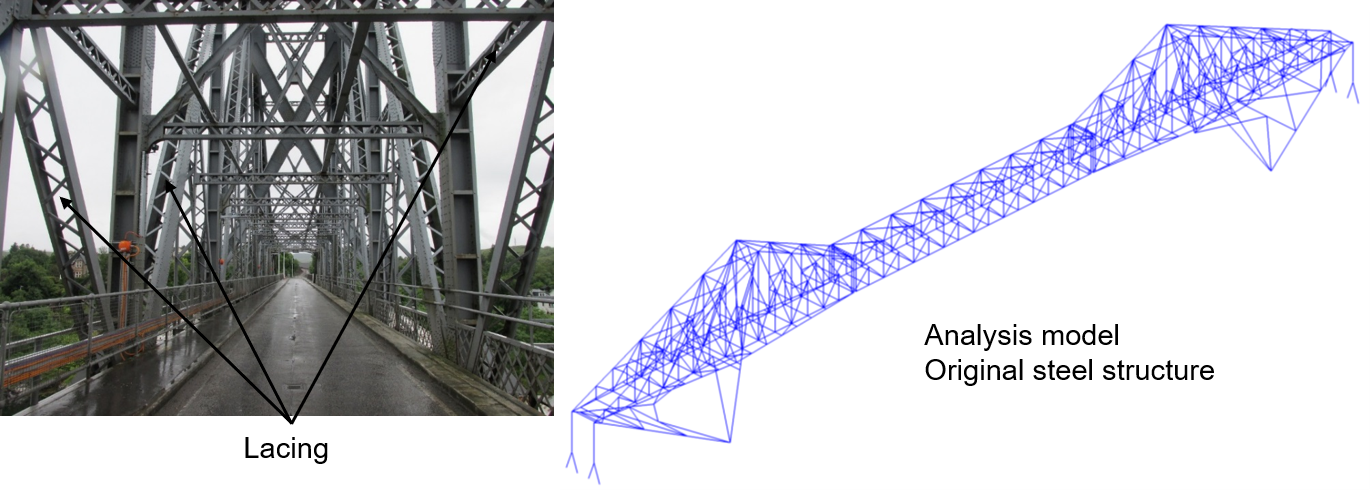 Figure 12. 3D midas Civil Analysis Model
Figure 12. 3D midas Civil Analysis Model
A 3D midas Civil model was created, including all the structural members of the structure. Regarding the original steel structure, all the structural members were modeled by lines of beam elements. The only thing not included was the lacing of some of the members. The figure above is a view of our midas Civil analysis model, including the original steel structure.
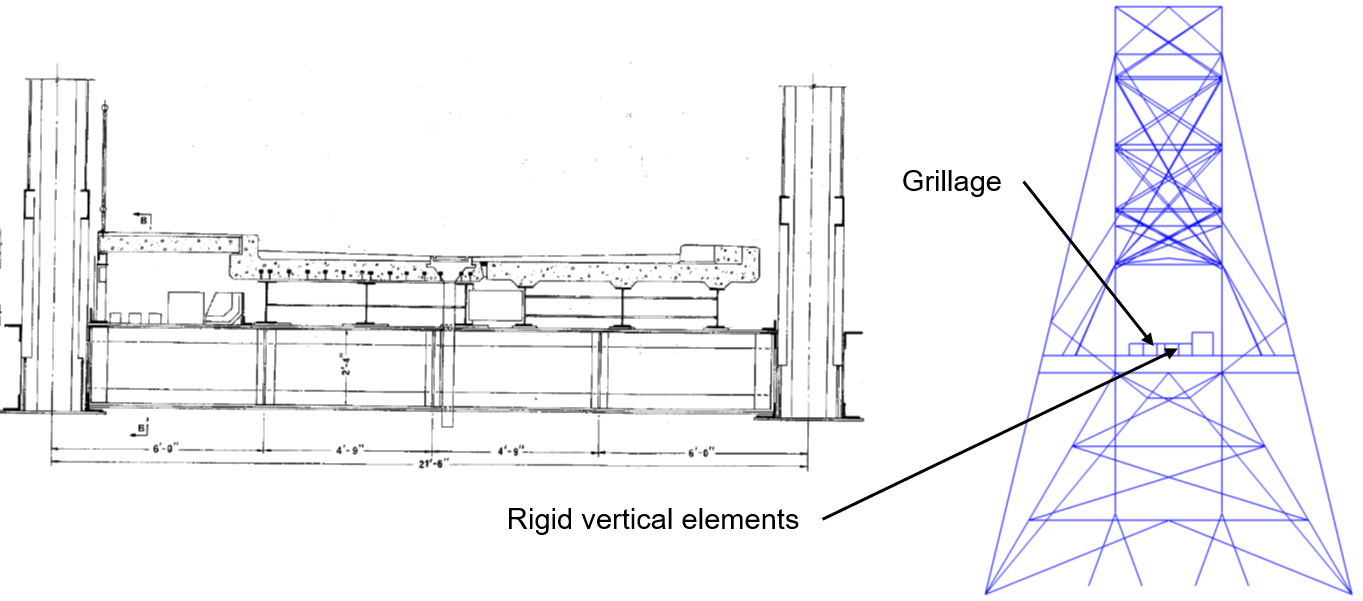 Figure 13. Grillage Analysis Method
Figure 13. Grillage Analysis Method
The deck was also modeled with beam elements by using the grillage analysis method. Furthermore, rigid vertical elements created to connect the grillage to the original steel structure are beam elements with high stiffness, inputted manually in the software.
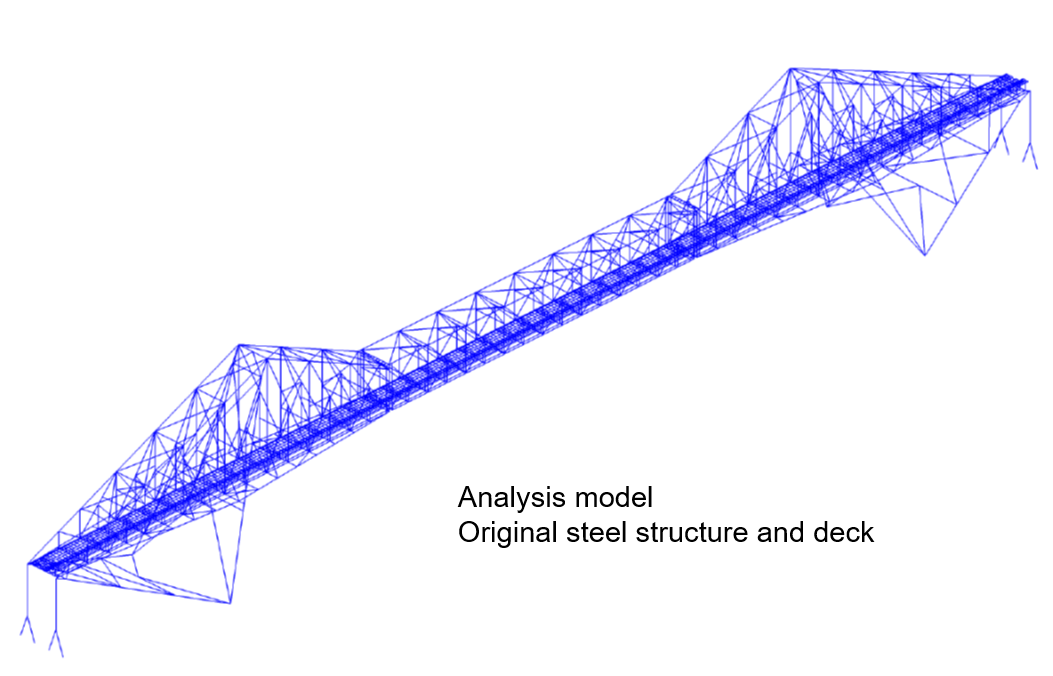
Figure 14. Analysis Model of Original Steel Structure and Deck
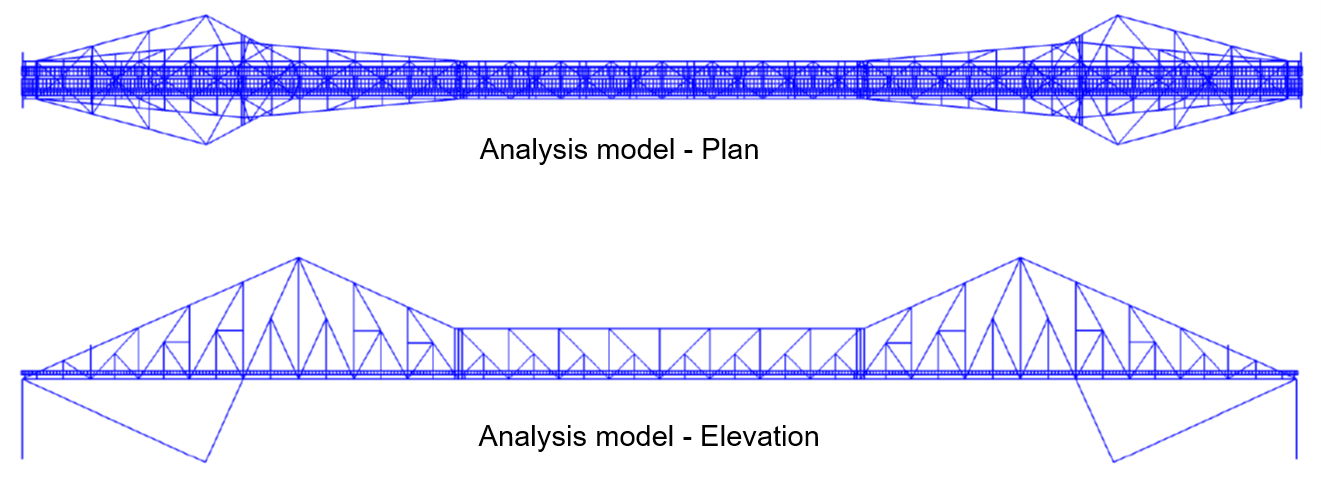 Figure 15. Analysis Model Plan & Elevation
Figure 15. Analysis Model Plan & Elevation
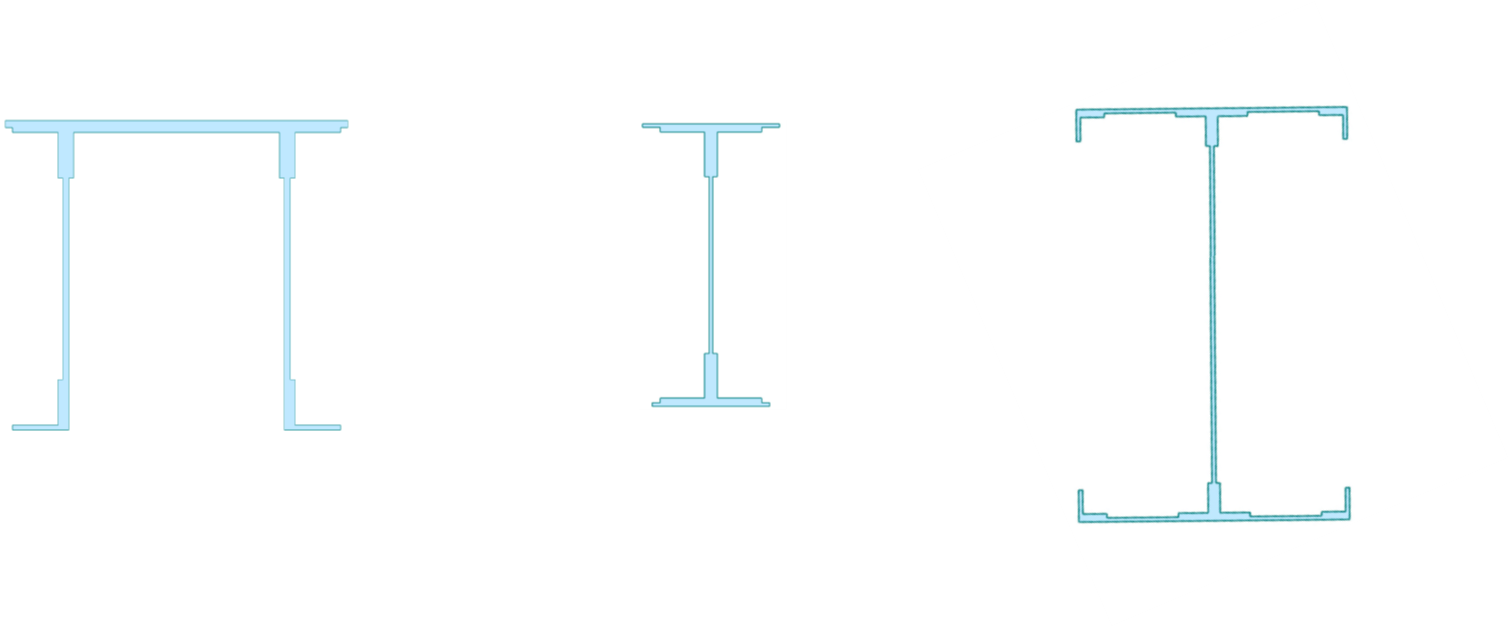 Figure 16. Section Properties created in midas Civil Section Property Calculator
Figure 16. Section Properties created in midas Civil Section Property Calculator
The figure above shows three examples of cross-sections. These sections were generated using the Sectional Property Calculator tool in midas Civil since the sections were not predefined.
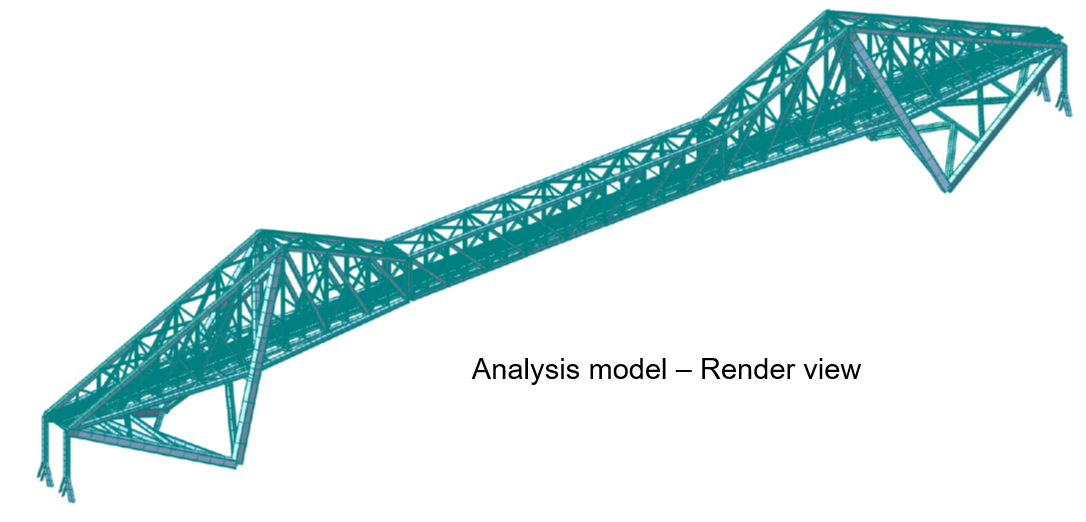 Figure 17. Render View
Figure 17. Render View
The figure above shows a rendered view of the model. The cross-sections are assigned to their corresponding beam elements once created.
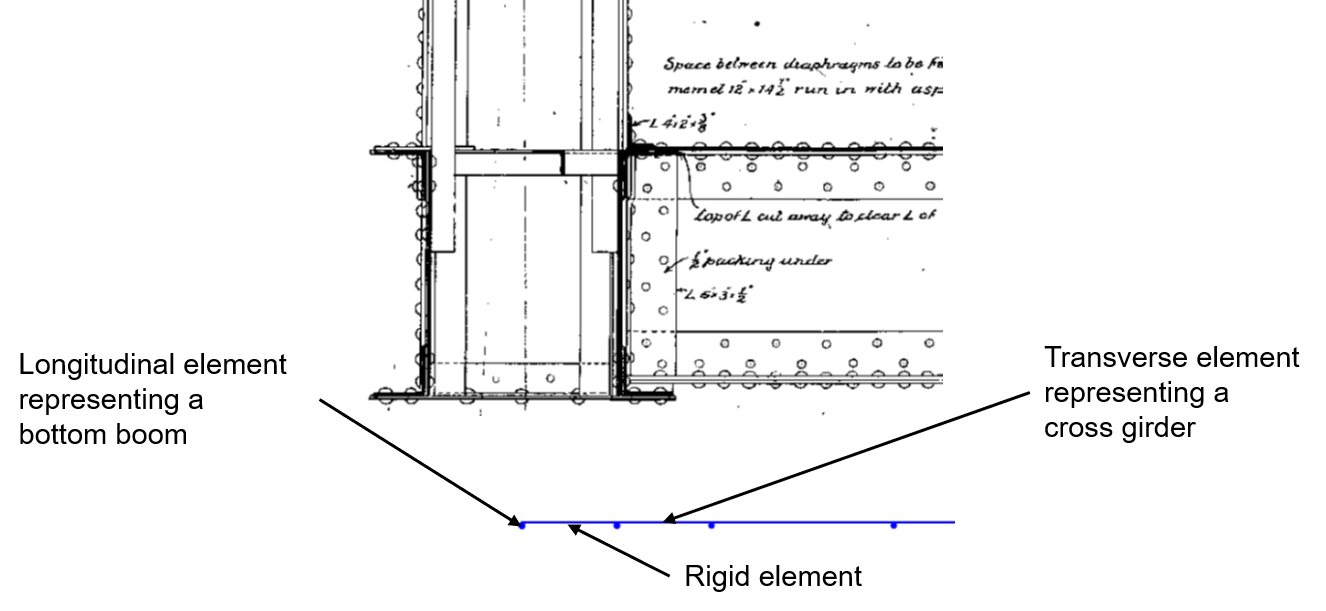 Figure 18. Rigid Element
Figure 18. Rigid Element
The eccentricity of traffic loads from the trusses plane was modeled by including a horizontal rigid element as shown in the figure above. The transverse element represents the cross girder, and the longitudinal element represents the bottom boom. Rigid elements are beam elements with high stiffness and can be assigned using a function in midas Civil called Rigid Link. The only difference is that the Rigid Link feature calculates the high stiffness internally.
 Figure 19. Suspended Span Analysis Model
Figure 19. Suspended Span Analysis Model
The connections between the suspended span and the cantilever sections, the 8 spherical rocker bearings were modeled by releasing the bending moments at the ends of these vertical elements. These bending moments are released by using the midas Civil feature called Beam-End-Release.
4. Analysis & Results
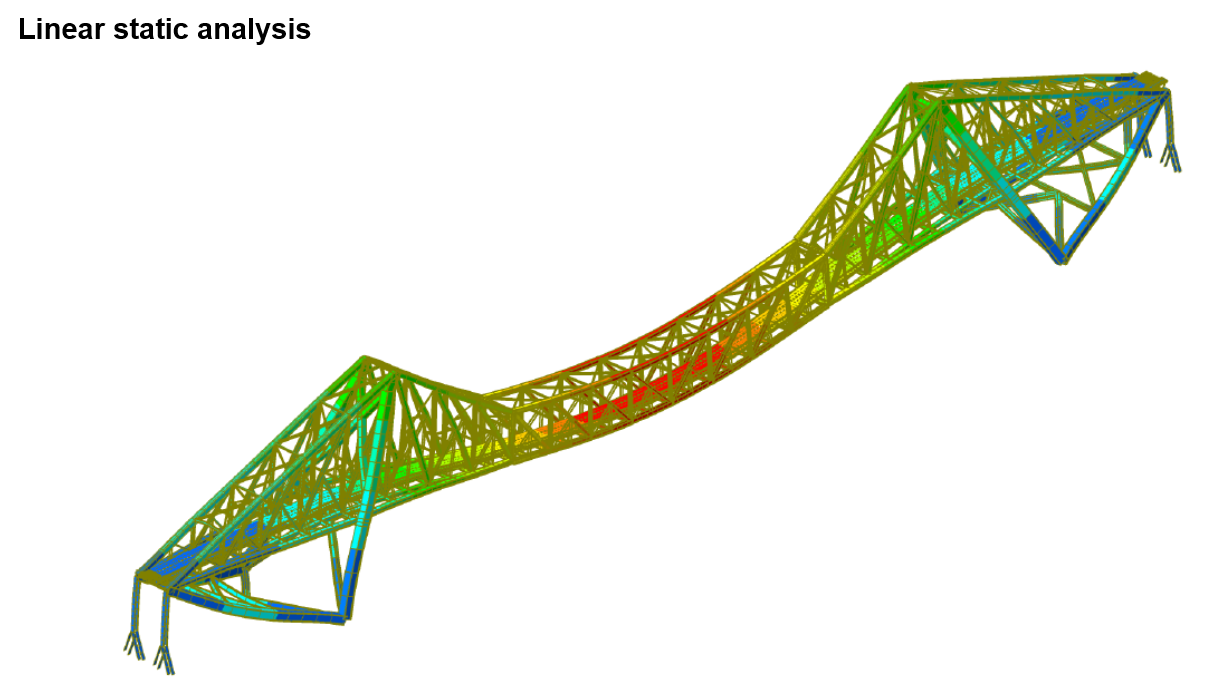 Figure 20. Linear Static Analysis Results
Figure 20. Linear Static Analysis Results
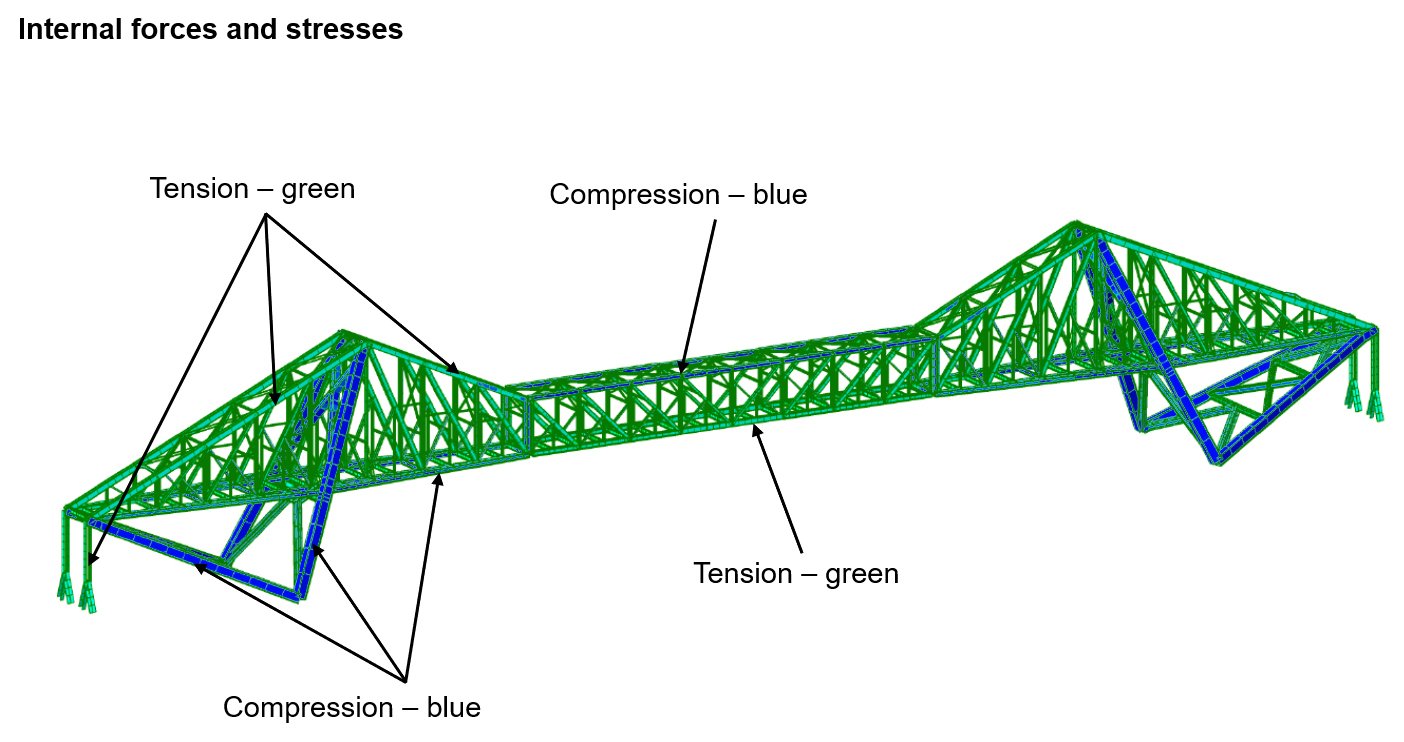 Figure 21. Internal Forces and Stresses
Figure 21. Internal Forces and Stresses
The resulting model is the original steel structure only. As expected, the dominant tensile forces are in green color in the suspended span's bottom boom. However, in the anchor ties, the dominant force is compression for the top boom of the suspended span and the cantilever's bottom booms, main legs, and back struts.
5. Structural Capacity Check
The last process of the assessment is to check the strength of members. This must be done according to BD 56/10 for structural steel and for concrete and reinforcement according to BD 44/15. The above assessment standards are based on pre-Eurocode BS 5400 (for design) and include specific assessment criteria. This webinar explains how the assessment process was carried manually; however, the same process can be carried out in the midas Civil using the new functions for assessment check standard CS 454.
Watch the Full Webinar Video
 Get Started midas Civil
Get Started midas Civil
 Featured blog of this week
Featured blog of this week






.jpg)
.png)

/design%20of%20steel%20composite%20bridge/Steel%20Composite-1.jpeg)